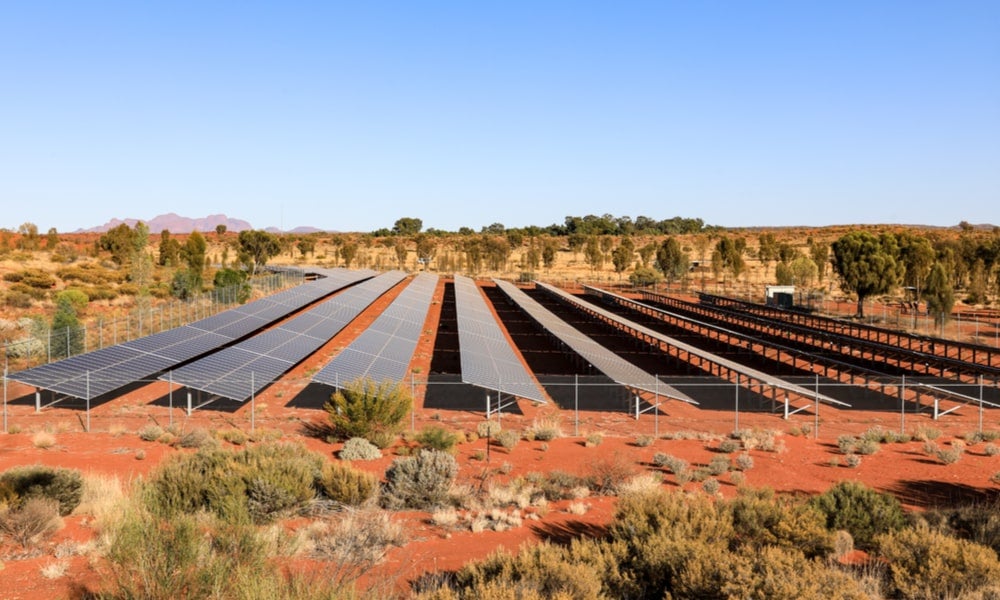Sustaining Australia’s economic success: A roadmap for the future
Australia went three decades without a recession – a streak only broken by a once-in-a-century pandemic. To do it again, five important factors need to be addressed
What will it take for Australia to repeat its world-beating economic growth record, maintain and strengthen an enviable social-safety net, and manage an unprecedented structural transition of its economy? There are both formidable obstacles and significant opportunities for Australia in trying to maintain its “economic exceptionalism”, according to Richard Holden, Professor of Economics at UNSW Business School and President of the Academy of the Social Sciences in Australia.
Australia’s ability to tame business cycles is remarkable by historical and international standards. For instance, he said the United States had two recessions while Australia kept a clean sheet. One of those US recessions, triggered by the 2008 financial crisis, was deep and long-lasting. Historically, in OECD economies the average length of an economic expansion is five and a half years, said Professor Holden, who recently delivered an address to the National Press Club of Australia on the state of Australia’s economic performance.
“Australia’s economic performance from 1991 to the pandemic was exceptional. Sure, there was an element of luck involved. The remarkable rise of China’s economy drove a huge export boom for Australia. But there was a lot more good design than there was good luck,” he said.
“Since our last major reforms, our tax system has become dated, bordering on obsolete. Our company tax rate has gone from among the lowest in the OECD to among the highest. Our comparatively low GST rate and coverage puts more pressure on personal income tax to deliver revenues – yet this acts as a handbrake on work and workers.”
At the same time, Professor Holden said political processes and culture make major reforms challenging to pull off. Several governments have dipped their toe in the water with significant ideas, only to find that political water “pretty icy” – and he said this inability to make major reforms is a significant risk. “Every year that we are unable to enact important reforms increases the chance of a recession if we are hit by a global or domestic shock,” said Professor Holden, who outlined a path to continued Australian economic exceptionalism through five main areas.
Improving sluggish productivity growth
Australia’s labour productivity has averaged just 1.2 per cent since 2005, a figure which is about half the rate Australia achieved in the 1990s, according to Professor Holden.
“But it’s important to realise that we’re not alone,” he said. “Over the last 10 years, labour productivity has been even lower than Australia in Canada, Germany, France, Italy, Japan, New Zealand, and the UK. So, whatever is going on here probably bears some similarity to what is going on in all advanced economies – things like the rise of the services economy and technological shifts.”
The Productivity Commission has carefully and consistently documented several important things Australia should focus on. These include increasing business dynamism, encouraging better matches between workers and firms, and improving human capital through education and training are all important ideas. “We should embrace them properly and in earnest,” said Professor Holden, who noted the Australian government has a stated intention to champion R&D, with a target of doubling national investment to 3 per cent of GDP, to keep Australia at the cutting edge of innovation.
“But the scary thing is that might not be enough,” said Professor Holden. “So what might be our next, big step-change innovation? Arguably it’s artificial intelligence, but not in the way you might think. Economists Ajay Agrawal, Joshua Gans and Avi Goldfarb argue that large language models, like GPT-4, are best thought of as “prediction machines”. What AI does is reduce the cost of prediction – often dramatically. That’s very useful, but by itself probably doesn’t get us a big leap in productivity.”
However, if organisations can use better predictions to reorganise their processes, then Professor Holden said the leap in productivity might be dramatic. To turbocharge the benefits of AI, better prediction needs to connect with improved design (of boats, of factories, of organisations) and create a virtuous feedback loop. “This will take policies that don’t place too many regulatory burdens on the use of AI, that empower organisations to redesign their operations, and help cushion the blow on those that lose out from the redesign,” he said.

Improving the quality and standard of education
Another important focus for Australia is education, which Professor Holden said was not all good news. Educational outcomes (at least as measured by standardised tests) have been declining, he said. Since international PISA tests began in 2000, Australia’s educational standing has been in constant decline relative to its peers. “In 2000 there were 35 countries with lower PISA math scores than Australia. Since then, 16 of them have overtaken us,” he said.
Australia is also doing worse in absolute terms. From a starting point of a little over 500, math scores have fallen by 33 points, reading scores by 26 points, and science scores by 24. The proportion of low performers has increased by between 6 and 8 percentage points, according to Professor Holden, who also noted the proportion of high performers has fallen by between 4 and 9 percentage points.
However, he said the good news exists in the form of excellent evidence from overseas about what works in education. “As with any policy question, to know what educational interventions work we need to understand the causal effect of the intervention on outcomes,” he said.
Economics of education researchers have demonstrated how effective some educational interventions can be. Among the most effective are high-dose tutoring, managed professional development for teachers, frequent feedback for students, the use of data to guide instruction, and reduced class size, said Professor Holden, who also serves as Director of the Economics of Education Knowledge Hub @ UNSWBusiness.
“The last one – class size – might surprise you as the conventional wisdom in Australia is that class size has no effect on student outcomes,” said Professor Holden, who noted that reducing class size by about 25 per cent has a big impact on student outcomes. “That’s instructive because it points to how misleading conventional statistical analyses can be. And it highlights the need for evidence from randomised trials in education in Australia.”

Accelerating the shift to decarbonisation
To achieve net zero emissions by 2050 and get Australia’s electricity grid to 82 per cent renewables by 2030 is a scientific, engineering, economic, and logistical challenge of staggering proportions, according to Professor Holden. “Although when I look around Australia – indeed when I look around the UNSW campus – I’m amazed by our scientific accomplishments and progress. Yet we should not underestimate the scientific challenge,” he said.
“But even setting that aside – and assuming success – we will be faced with one of two economic scenarios. Scenario one is that the world also moves to net zero and our fossil fuel industries will have essentially no export destinations. Now, there’s a difference between gross zero and net zero. But basically, we would then have to fill a hole in our economy that is about 15 per cent of GDP.”
To pull this off, Professor Holden said it takes a visionary who can coordinate all manner of different actors. “Steve Jobs did that for personal computers. But let’s not forget that there were plenty of hobbyists and enthusiasts in Silicon Valley in the 1970s. Yet it wasn’t random enthusiasts at the Homebrew Computer Club, but Steve Jobs that changed the world. And Jobs was not an enthusiast, he was a revolutionary. Who will be our Steve Jobs?”
Scenario two is that a meaningful portion of the rest of the world doesn’t decarbonise and Australia’s mining exports are still viable. “But given that we don’t know which scenario will occur – and we can’t wait to find out – we will have to have green energy superpower capability on hand just in case, assuming that’s possible,” he said. “You can see that I think decarbonisation is completely crucial. But it’s here that the execution challenges of decarbonisation and then replacing all the lost GDP that will be perhaps the largest we face in coming decades.”

The inexorable challenges of an aging society
Like many countries, Professor Holden said Australia’s population is aging. “We have fewer than 600,000 Australians over 85 today. In 2060 that is projected to be more than 1.5 million. We will have a lot more older Australians to care for in the coming decades,” he said.
The starting point in any discussion about this must be that every Australian deserves to age with dignity, according to Professor Holden, who stated bluntly that “we are not doing an adequate job of this at present”. This task is only going to get more challenging and cost a lot of money – however, if some of the other challenges outlined here can be solved, he said this can help pay for the costs associated with an aging population.
“But if that’s not enough, then we are going to be faced with some harder questions,” he said. “One is whether it’s right for people to die with significant superannuation balances while younger Australians fund their aged care. This is an intergenerational equity issue. It’s also an efficiency issue because of the additional tax burden on younger Australians.”
This brings the conversation back to the importance of productivity growth, and, in particular, the importance of productivity growth in the services sector. What it will almost surely require is more automation in sectors like aged care. “That won’t be a job killer because the demand for aged care will rise so dramatically,” said Professor Holden. “Government services, in general, will need more capital and more labour. Sometimes that will involve technology that substitutes for labour. And in other instances, labour and capital can be complements, not substitutes.
“This also brings me back to artificial intelligence. If we can get dramatically better prediction, then we could see large efficiency gains in the services sector. If that allows for processes and organisations to be redesigned then we can turbocharge those efficiency gains.”

The evolution of global supply chains
In the pre-pandemic era of seemingly unfettered globalisation, and armed with sophisticated IT systems, Professor Holden observed companies had fine-tuned “just-in-time” supply chains. This cut down on inventory, thus reducing working capital requirements, and this was one of the unexpected upsides of globalisation. “But, as we discovered, in a world where a major pandemic can occur, this is cutting things too fine. Supply chains need to be a little less just-in-time and a little more just-in-case,” he said.
While firms have done (or are doing this), a bigger issue looms: International trade has now been – or is in the process of being – weaponised, explained Professor Holden. “It now seems almost inexplicable that Germany became dependent on Russia for 55 per cent of its natural gas. Equally inexplicable is how the United States became dependent on Taiwan for 95 per cent of its advanced semiconductors. Of course, Taiwan is a friend of the United States – but I think you get the point. Geopolitics can have dramatic consequences for trade,” he said.
These decisions were made at a time when the prevailing wisdom was that trade prevents war, but he said war may now perhaps prevent trade. In such a world there will be – and there already is – a desire to ensure continuity of supply, through means such as “reshoring” and “friendshoring”. “One simply can’t ignore the need to diversify our global supply chains,” he said. “The crucial thing is to do this in a smart way. We should not reshore something that we can safely friendshore. For instance, there is simply no sound case for a domestic Australian semiconductor fabrication capability.”
Subscribe to BusinessThink for the latest research, analysis and insights from UNSW Business School
In other industries, Australia will probably end up manufacturing things that it used to trade internationally. In a narrow sense, it might look like it creates some jobs, but he said it also means “we’re not doing other things at which we’re relatively better – at which we have a comparative advantage. We lose from de-globalisation. It’s something to be managed, rather than letting it manage us,” he said.
In closing, Professor Holden said it is important for Australia to update its economic approach, but not uproot it. “We need to adapt to the present, but not abandon the successes of the past. But if we do that then Australian economic exceptionalism is definitely not over,” he concluded.
